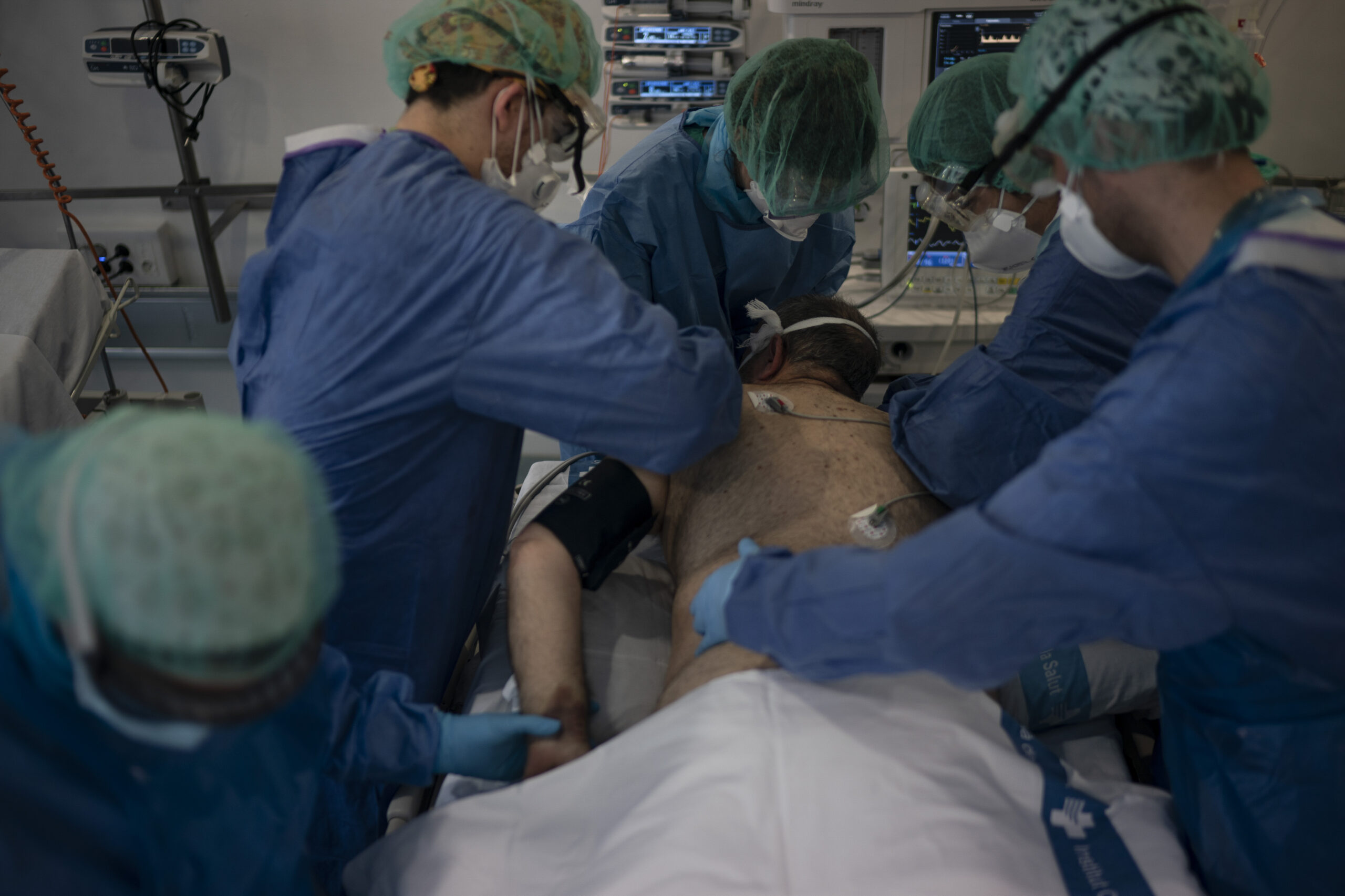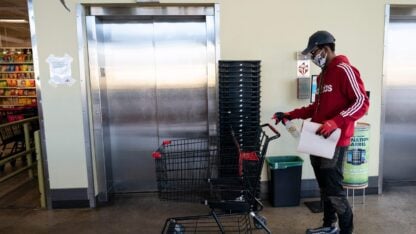Doctors Tweak A Tried Technique To Treat COVID-19 Patients

Healthcare workers assist a COVID-19 patient in a converted ICU in Spain. Hospitals are trying something new with COVID-19 patients; having them lie prone before they have to go on a ventilator.
Felipe Dana / Associated Press
When patients on ventilators aren’t getting enough oxygen into their bloodstreams, one thing doctors will try is flipping them over onto their stomachs.
Prone ventilation has been in use for patients with Acute Respiratory Distress Syndrome, or ARDS, for years, but now hospitals are trying something new with COVID-19 patients; having them lie prone before they have to go on a ventilator.
Having COVID patients on ventilators lie on their stomachs was already a clear choice, said Dr. Craig Coopersmith, interim director of the Emory Critical Care Center.
“Because of the similarities, and because of the known efficacy of prone ventilation, there wasn’t an aha moment. We said, ‘Well, we’ve been doing this for years,’” he said. “And it has been successful on many patients.”
It helps get more oxygen into patients’ bloodstreams; Coopersmith said you can turn someone over, and see results pretty quickly.
And with ARDS patients, at least, there is research that shows that prone ventilation doesn’t help everyone, but more people do live.
What’s new with COVID patients, though, is having some people turn over onto their stomachs before they have to go onto mechanical ventilators.
“We’ve had patients who are on their back, they’re awake, but struggling,” said Coopersmith. “They turn themselves over onto their stomach, and their oxygen saturation goes up. And they go back and forth. And ultimately, they never require a breathing machine.”
This is anecdotal, he cautions. There hasn’t been time to put together a big research study. But it’s an approach being used in hospitals around the country.
Doctor Nick Hill, chief of the division of pulmonary critical care and sleep medicine at Tufts Medical Center in Boston and a past president of the American Thoracic Society, said he and his colleagues would rather not have to put patients onto ventilators, and they have been proning patients to try to avoid it.
“We think we are probably avoiding intubation in some of these patients,” he said. “Most of them still end up on invasive mechanical ventilation; you can’t avoid that in all of them. But if you can avoid that in a significant minority, which I think is the case, then it’s worth trying.”
There are things to keep in mind about having people lie prone, doctors say. It can be delicate to flip people over when they’re hooked up to monitors and IVs, for instance, and doctors have to think about when to make the call to move a patient to a ventilator if lying prone without one isn’t working.
Still, this is a potential solution for some patients, said Dr. Graham Carlos, a pulmonary critical care doctor at Eskenazi Health in Indianapolis, and an associate professor at the Indiana University School of Medicine.
“I’ve seen so many creative things that COVID-19 has caused us to do in medicine. I’ve seen the technology now for the split vent, one ventilator for two people,” he said. “I’ve seen a lot of creativity with staffing in the ICU and resources.”
“This, I would put in the bucket of, just another creative solution that people have come up with, in response to strained resources,” he said.








